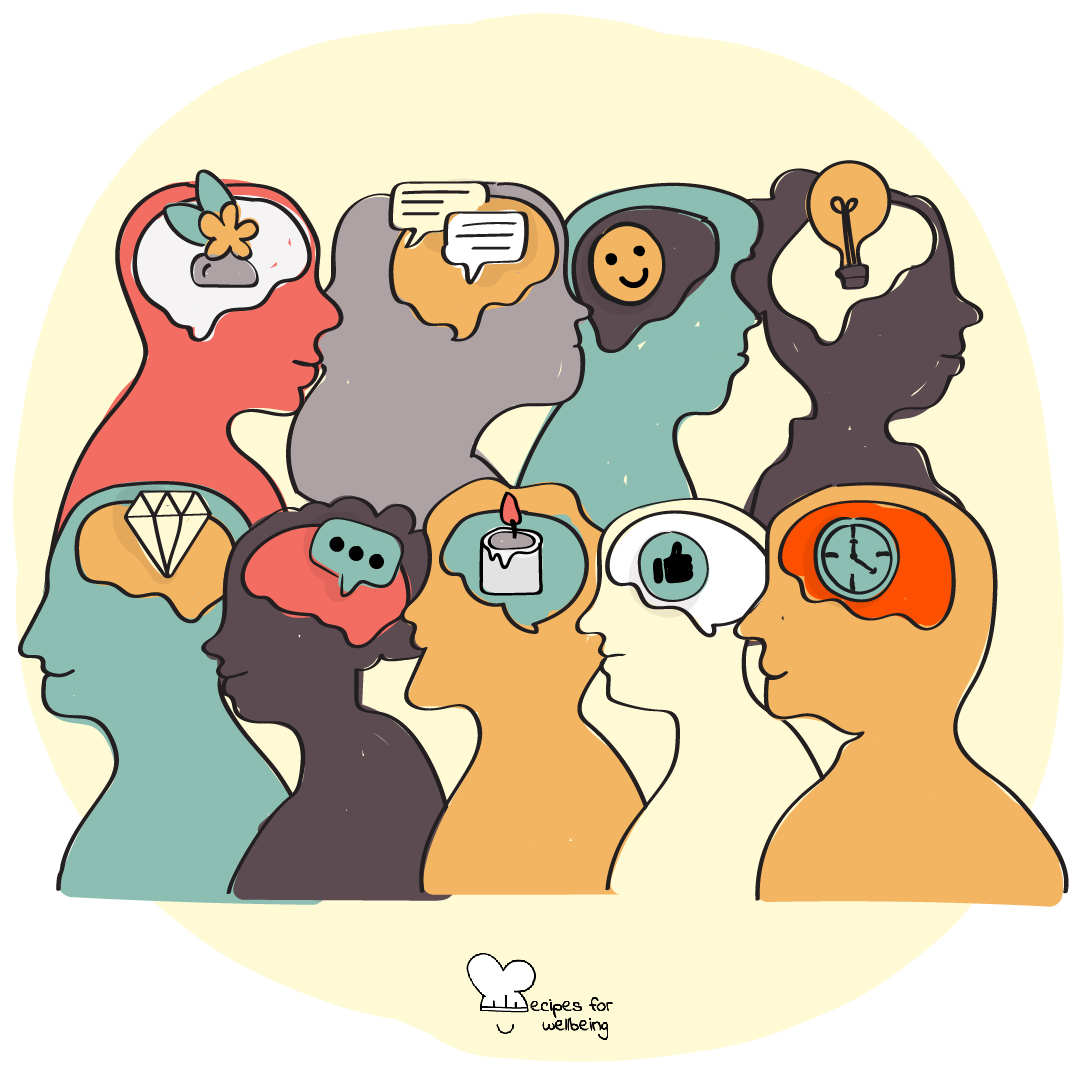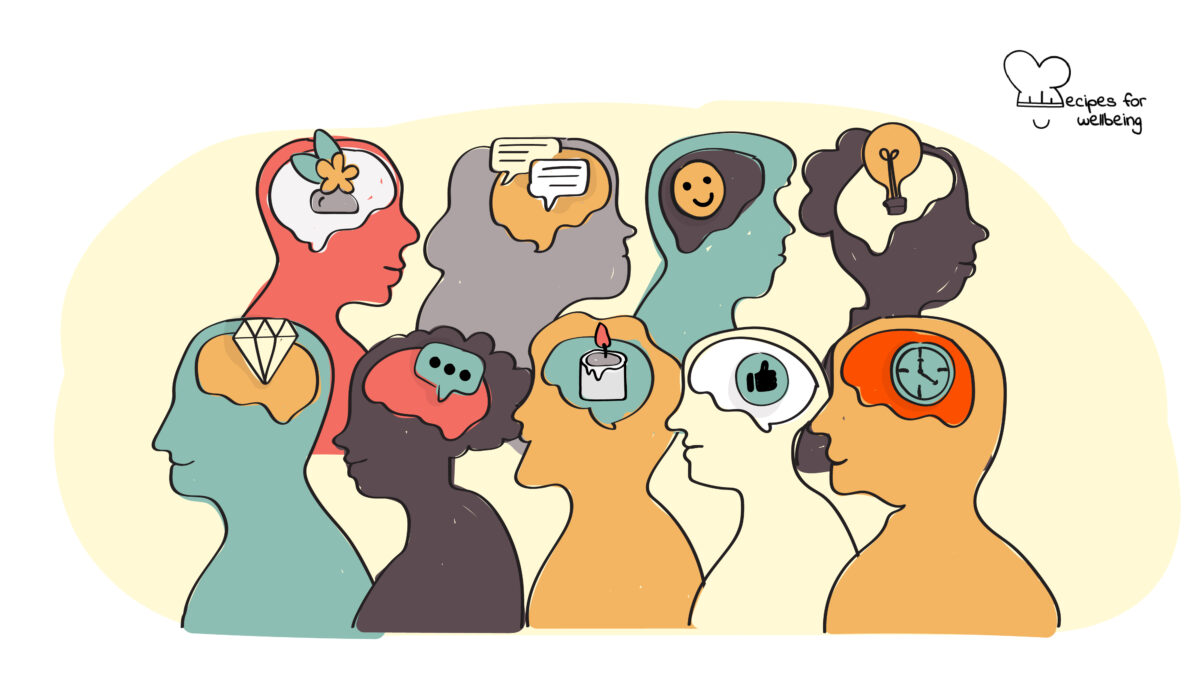
Neurodiversity in the modern workplace
Diversity, including neurodiversity, is a strength that can drive innovation and competitive advantage in the workplace. ―Danièle Castle
👥 Serves: 11-25 people, 2-10 people, 26-40 people, 41+ people
🎚 Difficulty: Medium
⏳ Total time: Ongoing
🥣 Ingredients: Commitment to diversity
🤓 Wholebeing Domains: Community, Radical Care
💪 Wholebeing Skills: Allyship, Belonging, Caring, Championing, Diversity, Equity, Fairness, Inclusion, Respect

Neurodiversity in the modern workplace
📝 Description
Understanding the benefits and challenges of a neurodiverse inclusive workforce.
Conditions such as dyslexia, dyspraxia, attention deficit hyperactivity disorder (ADHD), and autism mean that some people process and manage information differently. Neurodiversity is a term originally created by sociologist Judy Singer in the 1990s to explore the idea that these traits should be seen as natural diversity in the brain, rather than as a problem.
In recent years, it is becoming increasingly clear that fostering a neurodiverse workspace can be a strength for any organisation. This recipe shares a few tips for employers wishing to support their teams and organisations to become more inclusive of neurodiversity.
This recipe has been kindly donated by Eliza Williams, a consultant and researcher for digital content & media.
👣 Steps
Step 1 – Understand the benefits and challenges of a neurodiverse workforce
Being outside of the ‘societal norm’ can mean that employers disregard people who have neurodiverse traits in favour of those who don’t. For example, only 22% of autistic people in the UK are in employment, but most autistic people surveyed said they want to work.
Unfortunately, traditional application formats can make it difficult for someone who is neurodiverse to thrive. An interview is a great example of this. Autistic candidates have been found to rate poorly in interviews when it comes to using examples, giving details, and social small talk, as well as to be very honest – often at a detriment to themselves. Another example is that a dyslexic candidate might struggle to fill out a lengthy application form, especially if there are handwritten elements to the process, rather than typed. For more guidance, check our recipe “How to be inclusive of autism in recruitment practices”.
Without discounting the challenges that exist in setting up a neurodiverse inclusive workplace, there are numerous advantages as well! In fact, neurodiverse organisations can benefit from a range of approaches because they can build on different sets of skills and competencies. For example, those with ADHD may have high levels of empathy, those with autism may be skilled at focusing on complex data, and those with dyslexia may be gifted in design and displaying information visually. If you are curious to find out what superpowers exist in your team, try out this recipe: “Recognising brain strengths”.
Step 2 – How can employers help?
As an employer, you should work with your neurodiverse employees to ensure needed adjustments are in place, starting from the interview process. For instance, it might be helpful for candidates to have a clear agenda for the interview so they can adequately prepare and reduce their stress levels.
When onboarding new team members, it is good practice to share a comprehensive FAQs document that covers everything from where the toilets are, to the principles of engagement within the team, and to the support structures available to them. This will help neurodiverse team members reduce anxiety and stress.
Also, whether working remotely or in the workplace, you might consider providing staggered work schedules to increase flexibility or redesign the workplace for increased wellbeing. Our recipe “Creating the right work spaces” offers several tips on how to set up the work spaces to encourage high performance in your organisation. And if you have highly sensitive people in your team, invite them to consider the tips shared in our recipe “Thriving at work as a highly sensitive person”.
Additionally, pay attention to how neurodiverse team members communicate with their colleagues to prevent discrimination and unfairness. And did you reflect on how your own biases might impact your neurodiverse team members, for instance in performance evaluations? Check your biases with our recipe “Identifying bias in performance evaluations”.
Finally, it is important not to stereotype team members with neurodiverse traits, but to work with each of them to understand what adjustments or support might be needed. There is no one-size-fits-all approach so you must recognise the uniqueness of each individual. Only then can they bring their best assets forward and have equal opportunities to excel in their work.
Step 3 – Don’t forget about mental health!
As an employer, you should also be aware that certain mental health problems (such as depression and anxiety) may be more common in team members with neurodivergent traits. For this reason, you should not shy away from talking about mental health and ensuring adequate support structures are in place. You can refer to our recipes “Talking mental health in the workplace” and “Mental health in the workplace” for additional guidance.

